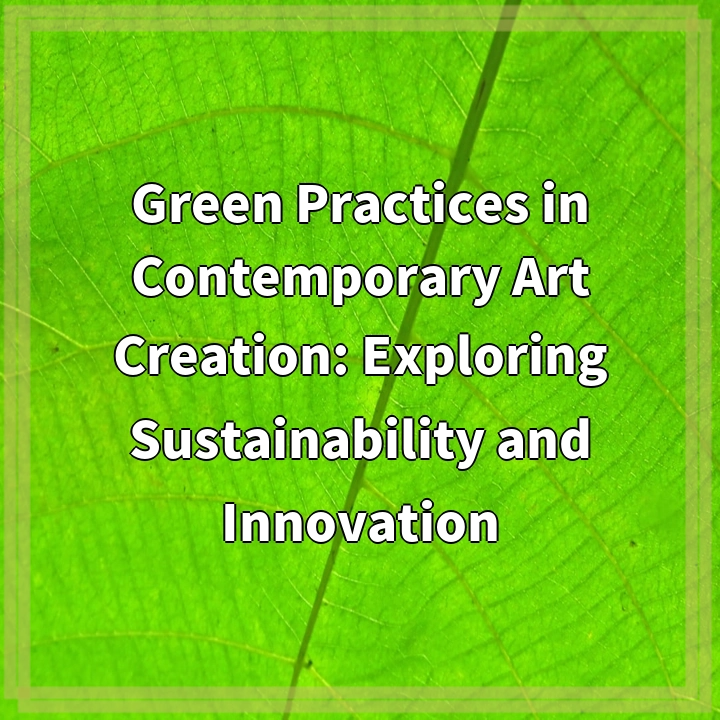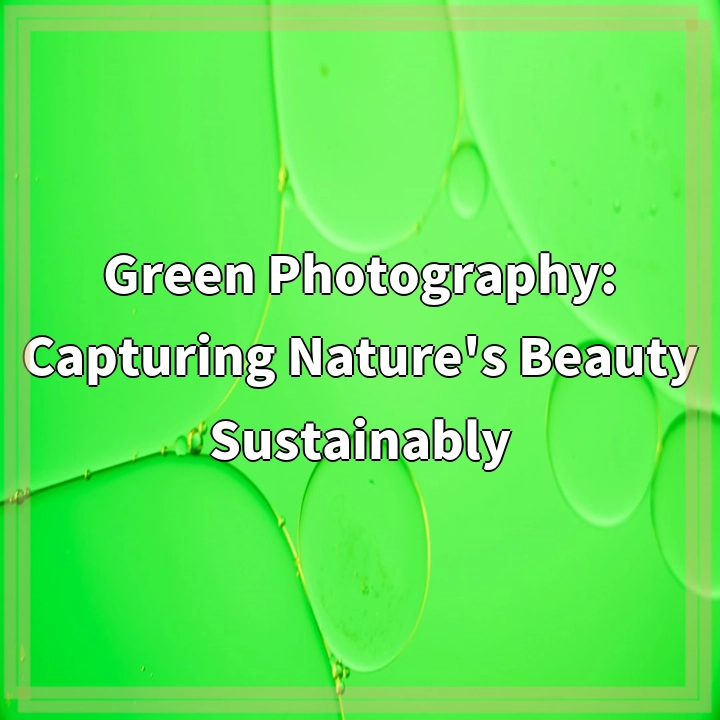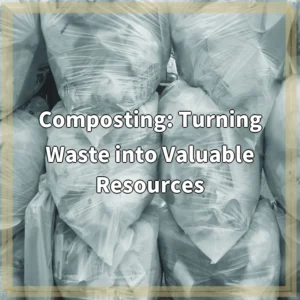
What it is:
Green Practices in Contemporary Art Creation refers to the adoption of sustainable and environmentally-friendly techniques, materials, and processes in the field of art. It involves incorporating eco-conscious practices into various stages of art creation, including sourcing materials, production, exhibition, and disposal.
Real-world problems:
Despite the growing awareness and interest in sustainability, the field of contemporary art creation still faces several real-world problems in implementing green practices:
Limited availability of sustainable materials:
One of the challenges for artists is finding sustainable alternatives to traditional art materials. While there has been progress in the development of eco-friendly paints, inks, and canvases, their availability and affordability are still limited. Artists often have to compromise between their artistic vision and their environmental values.
Energy consumption and carbon footprint:
The process of creating art, from manufacturing materials to running gallery spaces, often requires significant energy consumption. This results in a high carbon footprint, contributing to climate change. Artists and art organizations need to explore ways to reduce energy consumption, such as using renewable energy sources and implementing energy-efficient technologies.
Waste generation and disposal:
Art creation can generate a substantial amount of waste, including packaging materials, solvents, and leftover supplies. Proper waste management and disposal is crucial to minimize the environmental impact. Recycling, reusing, and finding alternative uses for materials are important considerations for artists and art institutions.
Lack of awareness and education:
Many artists and art organizations may have limited knowledge about sustainable practices and their potential impact on the environment. There is a need for greater awareness and education about green practices in art creation, including workshops, training programs, and resources that promote sustainable approaches to artists and art students.
By addressing these real-world problems, artists and art institutions can play a significant role in promoting sustainability, raising awareness about environmental issues, and inspiring positive change through their creative expressions.

Solutions:
Increasing availability and accessibility of sustainable materials:
Efforts should be made to expand the range of sustainable art materials and make them more accessible to artists. This can be done through research and development, collaboration between artists and manufacturers, and promoting the use of eco-friendly alternatives in the art supply industry.
Adopting energy-efficient practices:
Artists and art institutions can reduce their energy consumption and carbon footprint by implementing energy-efficient technologies, using renewable energy sources, and optimizing their use of lighting and climate control systems. This can significantly contribute to mitigating the environmental impact of art creation.
Implementing waste reduction and recycling:
Artists can actively seek ways to minimize waste generation by reusing materials, choosing eco-friendly packaging options, and implementing recycling programs. Art institutions can also play a role by providing recycling facilities, educating artists and visitors about proper waste disposal, and encouraging the reuse of exhibition materials.
Promoting awareness and education:
Art organizations and educational institutions can raise awareness about green practices in art creation through workshops, seminars, and exhibitions that showcase environmentally-conscious artworks. Artists can also contribute by sharing their sustainable practices and experiences, inspiring others to adopt eco-friendly approaches.
By implementing these solutions, the field of contemporary art creation can become more sustainable and contribute to a healthier planet. It is an opportunity to combine artistic expression with environmental responsibility, inspiring change and promoting a greener future.















